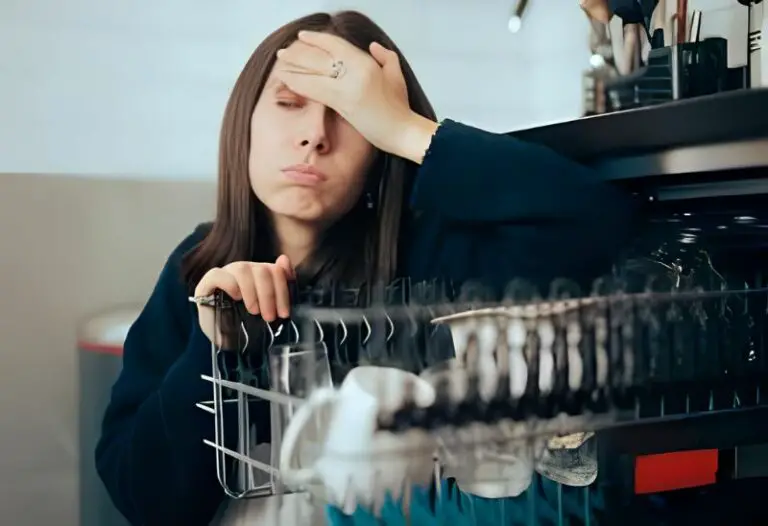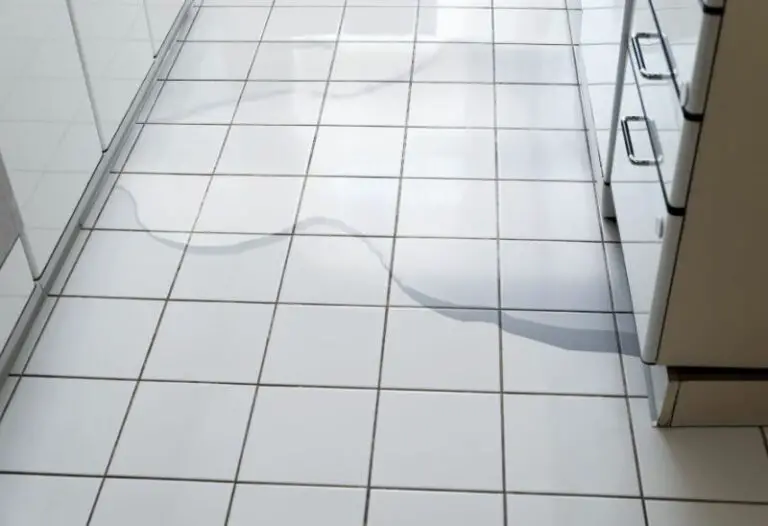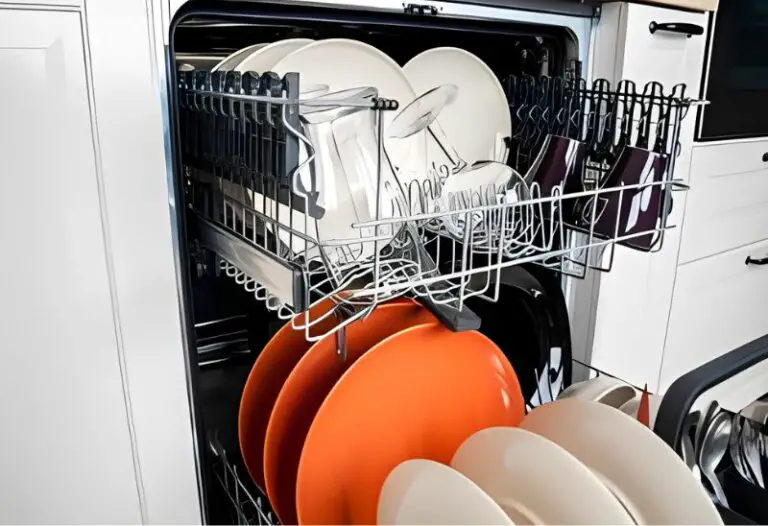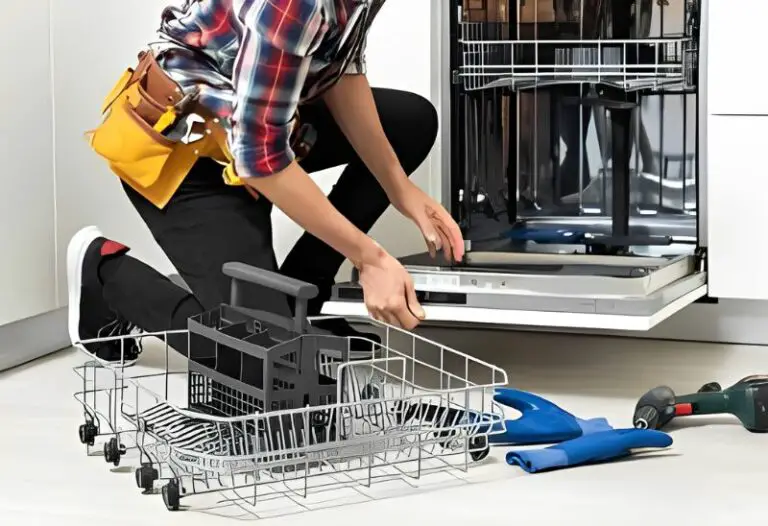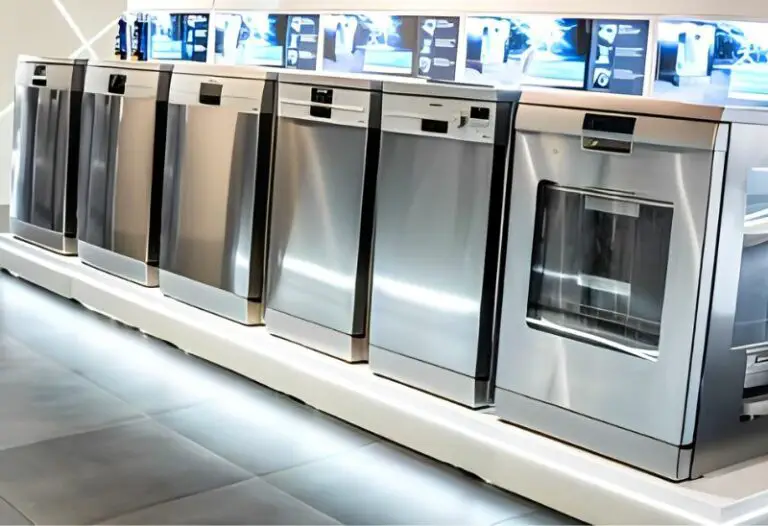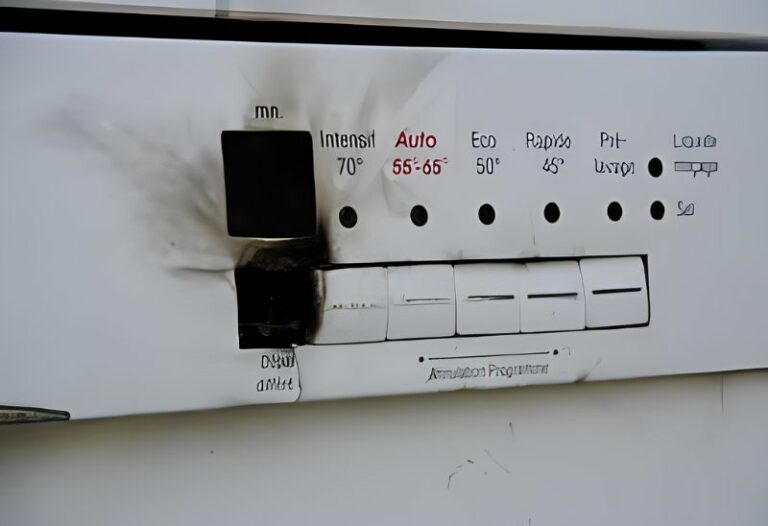Is your dishwasher flooding when it’s off? Don’t panic – help is here. This guide will walk you through troubleshooting the underlying issue quickly and easily.
You’ll discover the most common causes behind a runaway dishwasher. Armed with this knowledge, you can make an informed decision to fix it yourself or call in a pro.
Best of all, your kitchen will stay dry while learning prevention tactics. Turn the page to take control, stop the water and protect your home from further issues. Your repaired dishwasher will have you celebrating again in no time.
Key Takeaways
- Understanding common causes helps prevent future dishwasher leaks.
- Troubleshooting steps can often be performed without professional help.
- Recognize when to seek professional repair services to avoid further damage.
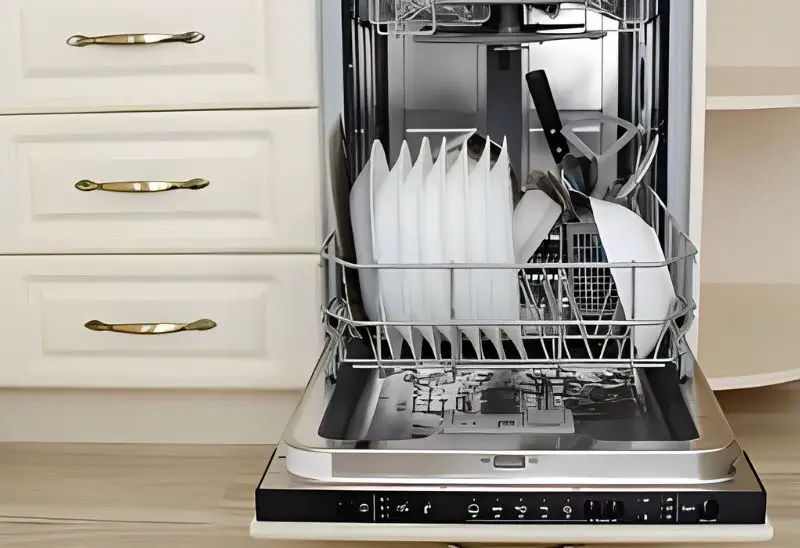
Common Causes of Dishwasher Filling Up With Water When Not On
When your dishwasher fills with water when it’s not in use, this can be confusing and frustrating. It’s important to understand the common causes so you can address the issue properly.
- Faulty Water Inlet Valve: Your dishwasher’s friend for controlling water is the water inlet valve. This can become your troublemaker if it gets stuck open or wears out, causing continuous filling. It’s like a faucet that won’t turn off! Check for a malfunction or debris causing a blockage.
- Solution: Replacing the faulty valve should stop the water from overstepping its bounds.
- Leaking Drain Hose: The drain hose is the escape route for used water. However, if it gets damaged or disconnected, it can spill water, leaving puddles near your dishwasher.
- Solution: Inspect it thoroughly for cracks or tears and either repair or replace it.
- Clogged Drain: The drain can get clogged with food debris or soap scum. If water can’t leave the dishwasher after a wash cycle, it has to stay put at the bottom.
- Solution: Clean out any blockage and send it down a vinegar rinse cycle for good measure.
- Malfunctioning Float Switch: The float and float switch work together to tell your dishwasher when there’s enough water and to stop calling for more. If dirty or damaged, they might keep crying for water, leading to overfilling.
- Solution: The float switch might need a replacement.
- Timer Malfunction: Your dishwasher’s timer is the brains of the operation, deciding when and how much your dishwasher should fill with water. A hiccup here can lead to random fills.
- Solution: This is tricky and might need a professional’s touch to diagnose and fix.
Your task is to be a detective and check each of these potential culprits. Remember, it’s like solving a puzzle, so stay patient and you’ll prevent your dishwasher from taking an unintended bath!
Dishwasher Filling Up With Water When Not On: Troubleshooting Steps
When your dishwasher starts to fill with water unexpectedly, it can be quite puzzling and frustrating. Fear not, as I will guide you through the necessary troubleshooting steps to diagnose and fix the issue. Grab your toolbox, and let’s get to work!
Step 1: Inspect the Dishwasher’s Door and Gaskets
First things first, check your dishwasher’s door. Make sure it is firmly closed and latched. An open or unlatched door could cause your appliance to not start a wash cycle properly. The door gaskets should also be free from any damage and properly sealed to prevent water from seeping through.
Step 2: Check the Water Inlet Valve
A faulty water inlet valve could be the reason why your dishwasher is filling with water when it’s not running. Shut off the water supply before examining the valve for any debris or malfunction. Use a multimeter to see if it has continuity. If it doesn’t, you might need to replace the valve.
Step 3: Test the Float and Float Switch
The float is responsible for regulating water levels, while the float switch signals when to stop filling the tub. Inspect for any blockage or malfunctioning float that might be jamming it; if the dishwasher float switch is stuck, it won’t function properly, and water could keep filling. A multimeter can help determine if the switch is working.
Step 4: Examine the Dishwasher’s Filters for Blockages
Your dishwasher’s filters can accumulate debris over time, leading to blockages. Check and clean these filters regularly to ensure they’re not causing backfilling of water. Remember, keeping filters clean helps your dishwasher run more efficiently.
Step 5: Evaluate the Condition of Hoses and Connections
Finally, assess the condition of hoses and connections. Look for kinks or leaks that can impact the water flow to your dishwasher. If you find any damage or if the connections are not tight, water may enter the dishwasher inadvertently. Fix any issues to prevent future problems.
By following these steps, you are taking the right approach in troubleshooting the mystery of your dishwasher filling up with water when it shouldn’t be. Remember that dealing with electrical components and water can be dangerous, so always prioritize your safety and consult a professional if you’re unsure about any step.
When to Call a Professional
Sometimes troubleshooting your dishwasher issues requires a bit more expertise than the average DIY project. If you’re stuck, it’s okay to call in the professionals – it’s the safest and often the most cost-effective choice in the long run. Here’s when you should pick up the phone:
- Suspected Timer Malfunction: Your dishwasher’s timer is a complex piece of technology. If you think it’s not working properly, this is outside the typical DIY scope and requires a professional’s touch. Timers need an expert diagnosis to ensure your dishwasher runs efficiently.
- Leaks of Considerable Size: A small puddle might be manageable, but extensive leaks are bad news. Here’s what to do:
- If you see water damage or significant leaking, it’s wise to contact a professional immediately.
- Not fixing a large leak right away can lead to more damage, and this will surely hike up repair costs.
- Electrical Issues: Dishwashers are intricate appliances that combine water and electricity, a risky combo if mishandled. If you notice anything odd about the power supply or wiring:
- Do not try to handle electrical issues by yourself.
- Turn off the appliance and call a professional. They have the training to fix these issues safely.
Professionals, such as appliance repair techs from well-known companies like Bosch or Maytag, have the necessary expertise and tools. They can typically identify the issue quicker and have access to the required parts for a speedy repair.
Reaching out means your dishwasher will be back to its best without risking your safety or further damage to the machine. Remember, while calling a pro might have a cost, it can save you money and trouble in the long run compared to a potential DIY disaster.
Additional Tips & Preventative Measures
Keeping your dishwasher in tip-top shape is key to preventing unwanted water build-up. Here are some straightforward tips to help you maintain your dishwasher and avoid any potential water trouble.
Regular Upkeep
- Filters: Make it a habit to check and clean your dishwasher’s filters regularly. A clear filter prevents debris from creating blockages that can lead to water issues.
- Float: Inspect the float and ensure it moves freely. If it’s stuck, it may cause overfilling.
Clog Prevention
- Avoid Overloading: Resist the temptation to stuff your dishwasher to the brim. Crowding can obstruct the water flow and increase the chance of clogs.
Proper Detergent Use
- Choose Wisely: Always opt for the recommended type of detergent to prevent excessive suds which might overflow.
Leak Readiness
- Leak Detector: Install a leak detector to catch early signs of leakage or overfilling.
Hose Health
- No Kinks: Ensure that the drainage hose isn’t kinked or obstructed to avoid water backing up into the dishwasher.
Do-It-Yourself Troubleshooting
- Self-Help: If you’re up for a little DIY, you can troubleshoot minor issues by consulting your dishwasher manual. Remember, when in doubt, reach out to a professional.
Monthly Cleaning
- Run a cleaning cycle with vinegar or a dishwasher cleaning agent once a month to dissolve any grease and remove odors.
By staying on top of these simple practices, you can keep your dishwasher running smoothly and avoid the hassle of unexpected water fill-up. Keep these tips in mind, and you’ll save yourself from potential water-related mishaps.
Frequently Asked Questions
When you find water inside your dishwasher when it’s not running, it can be puzzling and worrisome. This section addresses common questions you may have about why this happens and what steps to take to resolve the issue.
What could be causing water to accumulate in the dishwasher when it’s turned off?
Possible causes for water accumulation include a faulty water inlet valve, a clogged drain, or a malfunctioning float switch. These issues can lead to water leakage into the dishwasher.
How can I stop my dishwasher from filling up with water on its own?
To stop your dishwasher from filling up, you should first shut off the water supply. Then, investigate the water inlet valve and float switch, cleaning or replacing parts as needed.
What steps can I take if I notice water is backing up into the dishwasher while it’s not in use?
Check for clogs in your drain line and ensure the check valve isn’t malfunctioning. These can cause water from the sink to back up into your dishwasher.
What should I do if water in the dishwasher is not draining after a cycle completes?
First, inspect the drain filter and remove any debris. If the problem persists, examine the drain hose for clogs and ensure the drain pump is functional.
Why is there standing water in the bottom of my dishwasher when I haven’t run it?
Standing water can be a sign of a problem with the dishwasher’s ability to drain properly. This could be due to a blockage or a kink in the drain hose, a dirty drain filter, or a defective drain pump.
Could sink water be flowing back into my dishwasher and how can I prevent it?
If water from your sink is ending up in your dishwasher, it might mean there’s a clog in your drain line or an issue with the sink’s check valve. Regular maintenance and prompt repairs can help prevent this issue.
